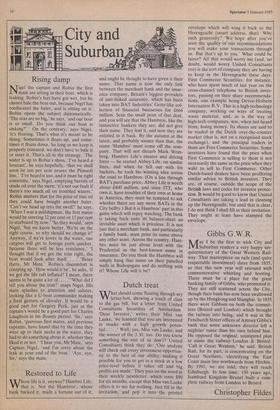Restored to Life'
whose life is it, anyway? Hambro Life, that is. Not the Hambros', whose bank backed it, made a fortune out of it,
and might be thought to have given it their name. That name is now the only link between the merchant bank and the insur- ance company, Britain's' biggest providers of unit-linked assurance, which has been taken into BAT Industries' Getty-like col- lection of financial businesses for ┬Ż664 million. Scan the small print of that deal, and you will see that the Hambros, like the instinctive bankers they are, did not give their name. They lent it, and now they are entitled to it back. By the autumn at the latest, and probably sooner than that, the name 'Hambro' must come off the com- pany. That will not disturb Mark Wein- berg, Hambro Life's creator and driving force ŌĆö he started Abbey Life, on similar lines, and when he fell out with his backers, he took his winning idea across the road to Hambros. (On a line through BAT's purchase price, Abbey Life is worth about ┬Ż400 million, and since ITT, who own it, have troubles of their own at home in America, they must be tempted to ask whether there are any more BATs in the City belfry.) But it is Hambros' part in this game which will repay watching. The bank is taking back onto its balance-sheet an invisible asset which is priceless. It is not just that a merchant bank, and particularly a family bank, must prize its name above any other asset. Across the country, Ham- bro must be just about level with the Prudential as the best-known name in insurance. Do you think the Hambros will simply hang that name on their panelled walls in Bishopsgate and do nothing with it? Whose Life will it be?






































 Previous page
Previous page